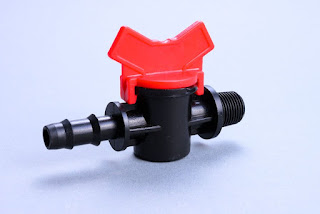3D Printing vs. Injection Molding
Both injection molding and 3D printing are additive manufacturing technologies that use near-identical product batches to construct very complex items. To accomplish either method, custom injection mould manufacturer can choose from a wide range of polymers and thermoplastic materials, but there are a few instances where injection molding or 3D printing is favored. Consider the following side-by-side comparison when deciding which strategy to apply for your company.
Injection Molding of Plastic
Injection molding is a quick manufacturing process that involves injecting molten plastic or another build material into a pre-formed mould, where it hardens and cools into shape. The parts can be removed and finished once the build material has fully set. Thousands or ten of thousands of production cycles are normal for each mould.
Advantages
Injection molding has a number of advantages, including:
Low Unit Prices
Replacing the prototype after the mold has been made is simple: molten build material is fed into the mold at high pressure, and the cast result is retrieved and completed as needed. In comparison to other production processes, plastic injection mold design uses raw materials efficiently and produces little waste. Injection molding is very cost-effective due to its simplicity and replicability. The lowest per-unit costs are seen at larger production sizes.

Product Excellence
The injection molding maker uses extreme accuracy to bring complicated designs to life. To avoid air bubbles, segmentation, or other design faults, every millimetre of the mould is completely filled. Injection moulding produces a finished product without the need for seams or assembly, resulting in smooth and functional surfaces. When compared to 3D printed items, this provides more visually appealing and reliable parts.
Speed
Injection moulded objects can set in a matter of seconds, depending on the type of plastic used.
Many plastics do not require finishing, which reduces production time even more. Most mould plastic chocolate mold can also hold many pieces, increasing production speed. When injection moulding is combined with the automated nature of the process, producers may produce hundreds of thousands of parts each day and efficiently sort them into batches.
Disadvantages
There are a number drawbacks to injection moulding, including:
Investing in the Mold Up Front
The cost of making the mould accounts for a large amount of the total. Investing in a long-lasting mould may be more expensive than using a 3D printer if the product has a short lifecycle or little demand.
Limitations on Modification
The mould can't be changed once it's been made, unless the product design is changed and the mould is recast. It may be preferable to employ a different production process until the design is finalised if you're still testing prototype advancements.
Applications
The following are some of the most common cheap plastic injection mold
applications:
● Production runs at a high volume.
● Precision and consistency are required for high-quality plastic goods.
● Projects that require a lot of time to complete.
● Any parts, ranging in size and complexity from little to large and simple.
We recommend that readers learn more about the possibilities and benefits of large-scale injection moulding.
3D printing is a method of producing three-dimensional objects.
3D printing works by building three-dimensional parts layer by layer from computer-aided design (CAD) files. The 3D printer makes one object at a time by stacking vertical layers of filament on top of each other.
Advantages
Several advantages of 3D printing over plastic injection moulding include:
Low Initial Investment
Specialized dies are not used in 3D printing. When the design file is finished, the printer can print one or hundreds of the finished product for the same price per unit.
Flexibility
3D printers can readily adapt modifications to the product design since they use a computer file rather than a mould. When your team is prototyping different concepts and stages, this is excellent.
Disadvantages
In some cases, 3D printing might make the procedure more difficult, and it has the following disadvantages:
Technical Problems
3D printing is a new field of study. Software and hardware might fail, resulting in defects and a lack of structural integrity that must be recognised throughout the quality assurance process.
Speed
3D printing creates one item at a time, layer by layer. It's best used for orders of a few hundred units or fewer.
Product Excellence
During manufacturing, 3D printing can produce visible ridges and structural flaws that aren't generally seen with plastic injection moulding.
Applications
3D printing is commonly used for:
● Product prototyping and testing
● Production runs are limited.
● Products that can be customised.
● Modified or updated products on a regular basis.

Comments
Post a Comment